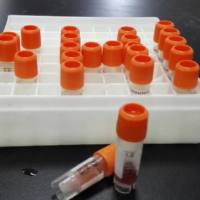Detection of Chromosomal Aberrations in Lung Tissue and Peripheral Blood Lymphocytes Using Interphase Fluorescence In Situ Hybridization (FISH)
互联网
444
Many cancers arise from gene-environment interactions, where susceptible individuals develop cancer after exposure to toxic or mutagenic environmental agents (1 ). Genetic instability, whether constitutional or induced, has long been suspected to predispose to carcinogenesis. Cytogenetic assays are classical methods for detecting genetic instability, in which chromosome aberrations are used as biomarkers of the effect of exposure to genotoxic agents. The conceptual basis of this approach revolves around the assumption that the extent of genetic damage reflects critical events in the carcinogenic process, such as an impaired ability to remove damaged DNA or failure to correctly rejoin DNA breaks (2 ). In a prospective study, Sorsa et al. (3 ) reported that subjects with a high level of chromosomal aberrations appeared to be at an elevated risk for cancer. Bonassi et al. (4 ) and Hagmar et al. (5 ), in two independent prospective studies, reported a significant increase in the mortality ratio for all cancers in subjects who had earlier shown elevated levels of chromosomal aberrations in their lymphocytes. Recently, the data from these two studies were pooled and the results indicate that the frequency of chromosome aberrations in peripheral blood lymphocytes is a relevant biomarker for cancer risk in humans, reflecting early biological effects of exposure to genotoxic carcinogens and/or individual susceptibility to cancer (6 ,7 ).









